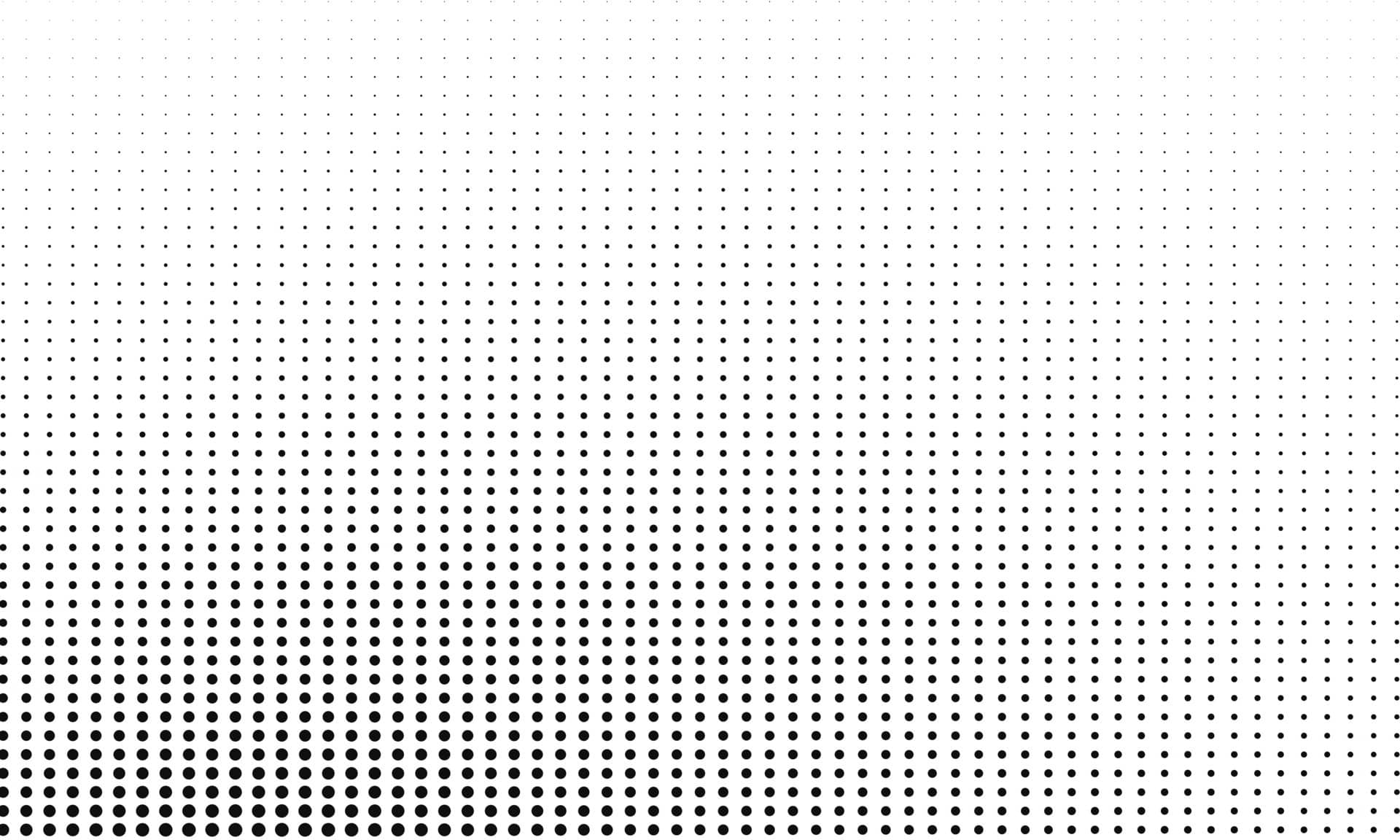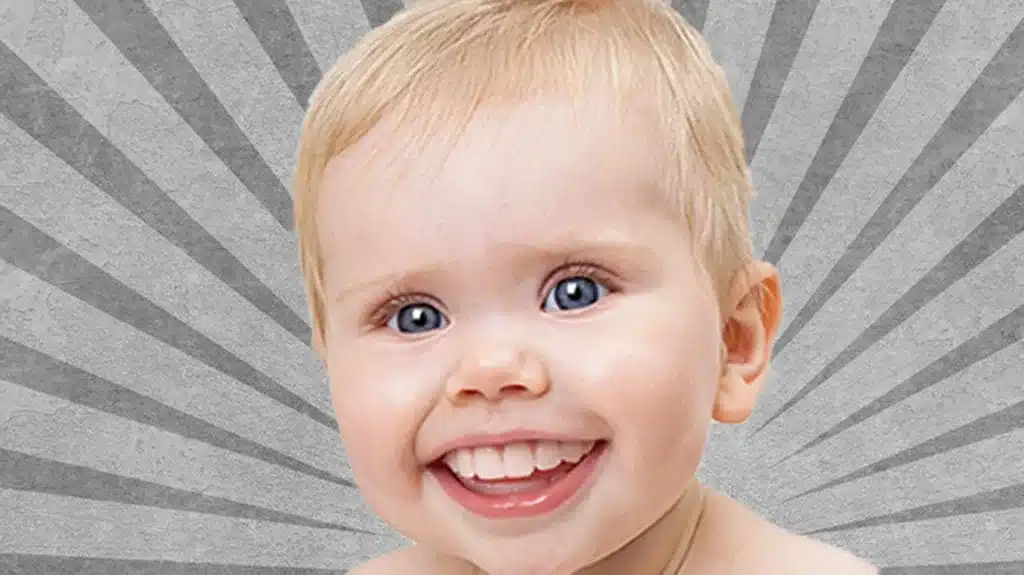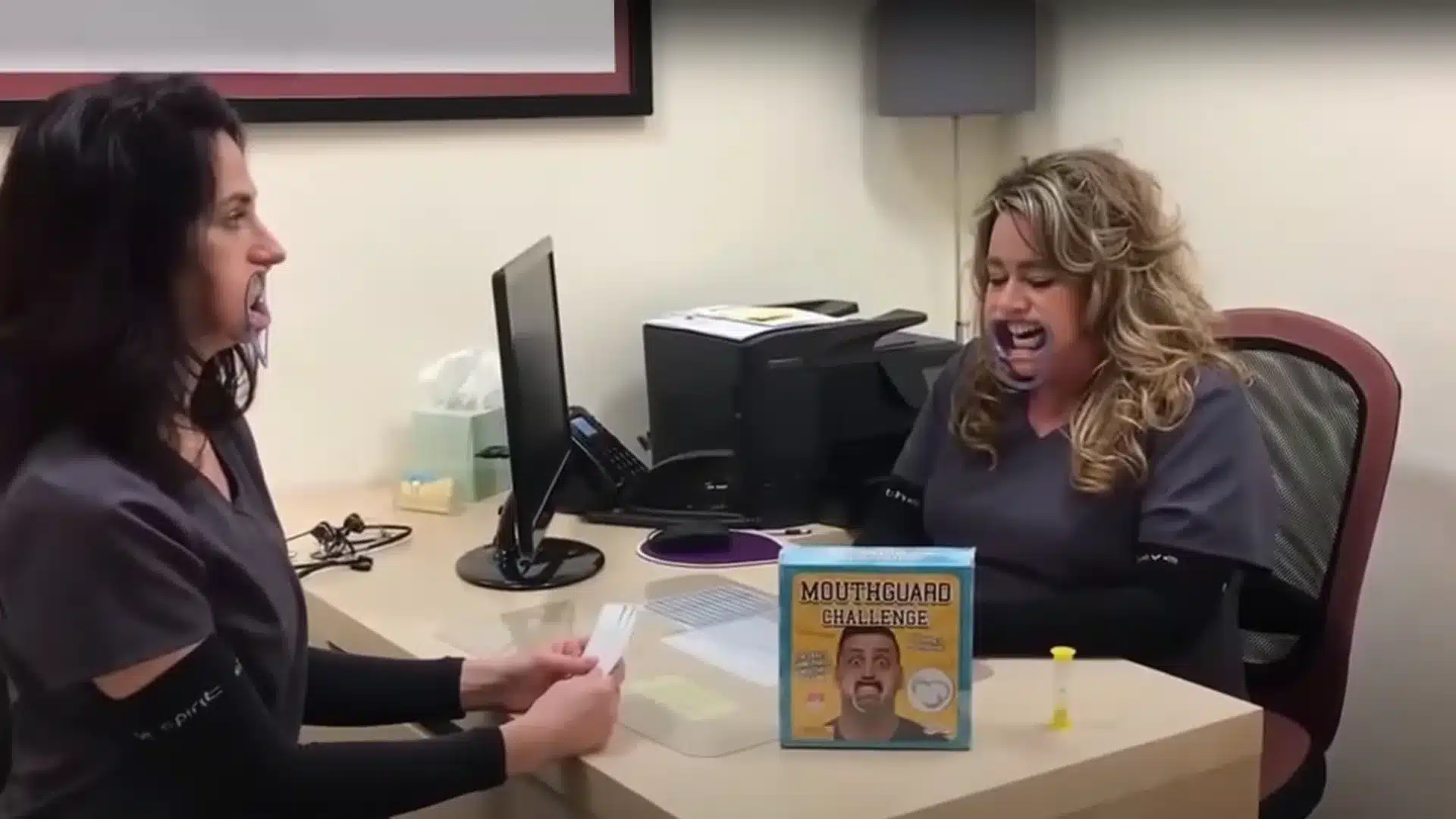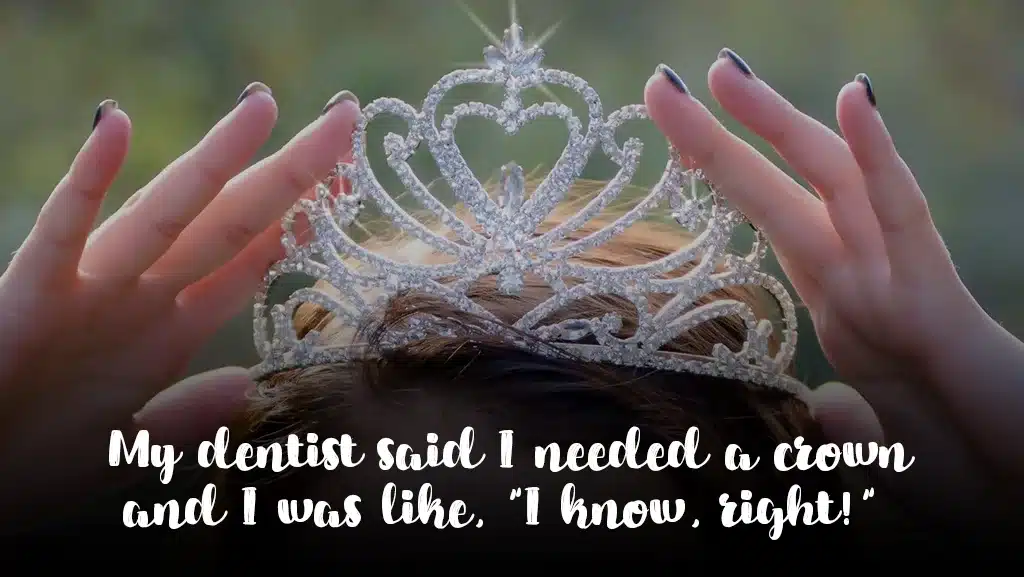When I was on maternity leave I was busy taking care of my baby. I wasn’t seeing patients at the office and I wasn’t taking calls on the weekends, but I was still a dentist. There are some things you just can’t shut off (sometimes no matter how hard you try).
While the majority of my days were spent with just one person, a very cute brand new person with a gummy smile and no teeth to fuss over, my imagination started to get the better of me . . .
Introducing Baby Riddle (with teeth):
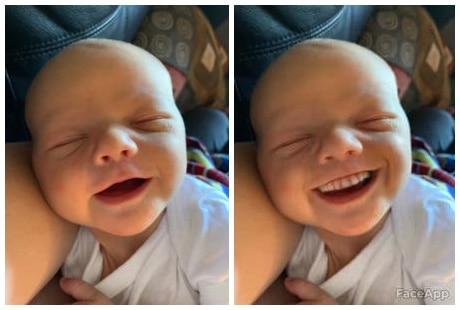
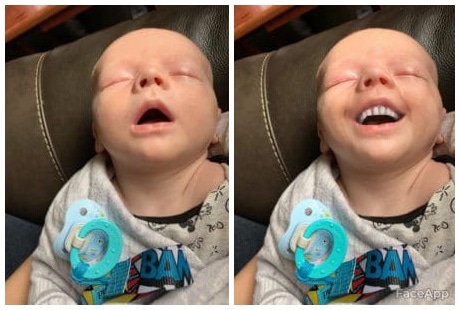
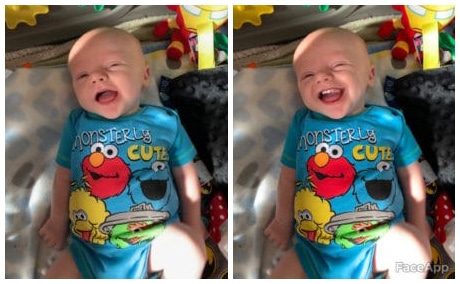
Okay, this may indicate that I had a bit of time on my hands, but I had to find something I could do with a sleeping baby in my lap . . . Thanks, FaceApp!
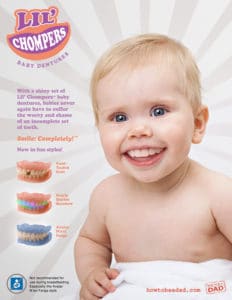
I also found a funny website that created this ad (pictured here) for a BAD PRODUCT IDEA called Lil’ Chompers (featuring various baby dentures) nearly a decade ago and I literally laughed out loud reading this post.
If you ever need a silly diversion, the bad product ideas over on HowToBeADad.com are funny.
Wouldn’t baby dentures be SO interesting? The logistics wouldn’t work, of course. Imagine taking impressions of a tiny moving target like that.
Then there’s the whole jaw growth thing . . . so they’ll only fit for about a week or so before they need a new set. Plus, what do babies need help chewing anyway? Certainly not breast milk!
But this all leads me to Baby Dentistry topic number 2, seeing baby teeth before you should really be seeing baby teeth. You can catch up on baby dentistry, part one if you missed that one, but today I’m going to talk about . . .
Natal & Neonatal Teeth
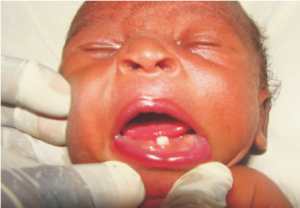
Olatosi, Olubukola & FA, Oredugba & Sote, Elizabeth & AS, Salami & Nzomiwu, Chioma. (2012). Natal and neonatal teeth: Literature review and report of seven cases in a Nigerian Tertiary Hospital. Nig Dent J. 20. 46-51.
Alas, most people will have to wait at least 6 months to see what their babies will look like with teeth. But there are some babies who give their parents a hearty surprise when they emerge from the birth canal with already erupted teeth. That’s right; natal teeth are a thing, as are neonatal teeth, which would be teeth which erupt within the first 30 days of life. The distinction is somewhat arbitrary, since the incidence and treatment are similar.
The likelihood of a baby being born with a tooth is about 1:700 – 1:3000, depending on the study you choose to reference. The teeth most likely to be erupted are the lower incisors, and most of the time these are the baby’s deciduous teeth (primary teeth), not supernumerary (extra) ones.
Babies born with teeth should be evaluated by a pediatric dentist and a radiograph should be taken to determine the amount of root structure present. Most of the time the tooth is recommended to be retained, if possible.
Reasons to remove the tooth would be if it was loose, so that the tooth wouldn’t dislodge and potentially be aspirated, or if the tooth made nursing impossible or otherwise significantly irritated the baby’s tongue or lower lip, a condition called Riga-Fede disease.
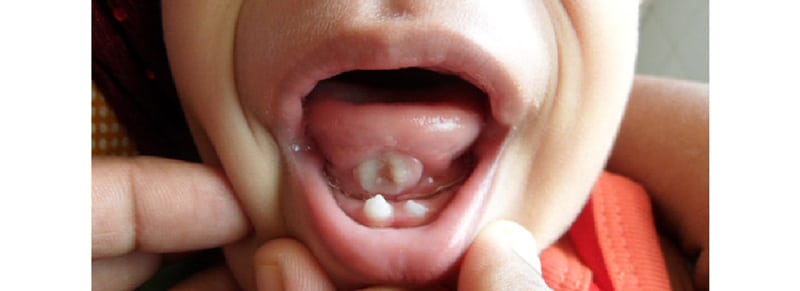
There are other occurrences in babies which can present a similar appearance to neonatal teeth, but are really just false alarms. Epstein’s pearls and Bohn’s nodules are both developmental cysts that can be present at birth and are no cause for concern.
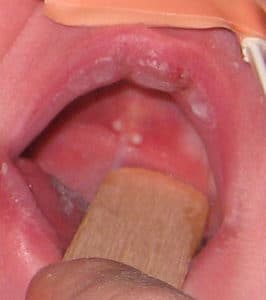
Epstein’s pearls are often found on the hard palate, and at the junction of the hard and soft palate, and are the result of epithelial cells getting trapped during the normal fusion process of the two sides of the hard palate during development.
Bohn’s nodules are more frequently seen on the alveloar ridge, so they look a little more like natal teeth, and are mucous gland cysts formed by trapped minor salivary gland cells. They can also be located on the hard palate. Both these conditions are completely harmless and resolve on their own with no intervention necessary.
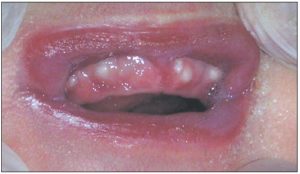
source: Photoclinic: Bohn Nodules
Riddle is 5 months old now. Still no teeth (thankfully – I imagine that makes breastfeeding much more difficult!) Around 6 months is when teething usually starts for most little ones. Stay tuned for a blog post on teething once Riddle starts that dreaded process . . . if I’m not too sleep deprived to write about it!
Love & Babies With Teeth Would Be a Cool Band Name,


